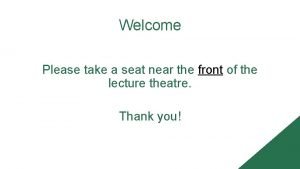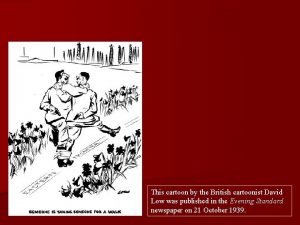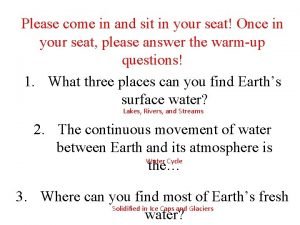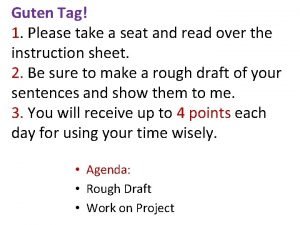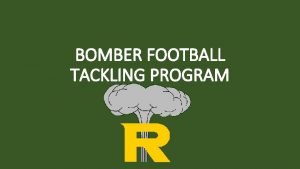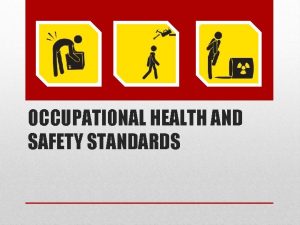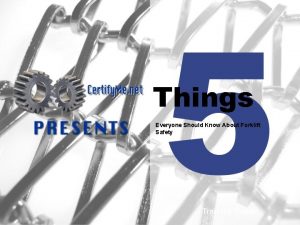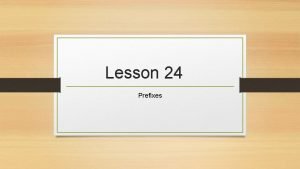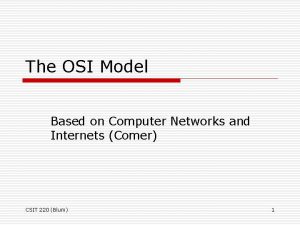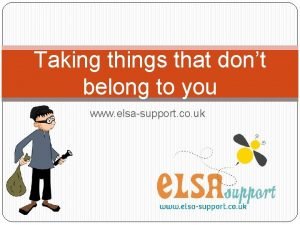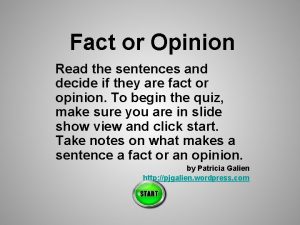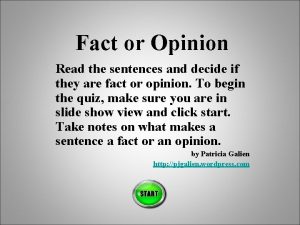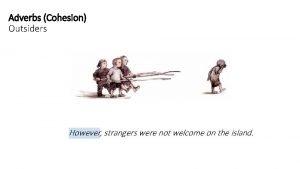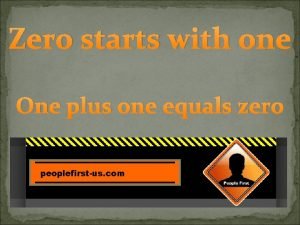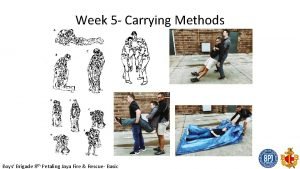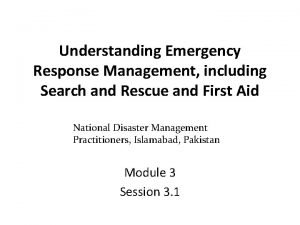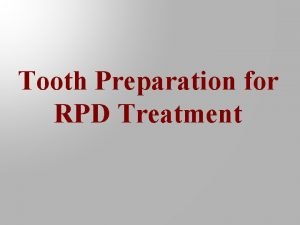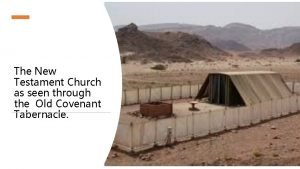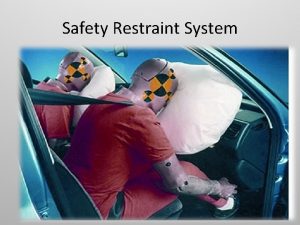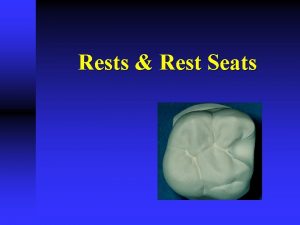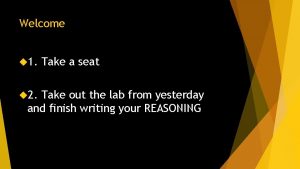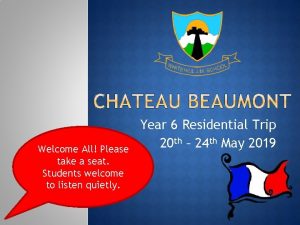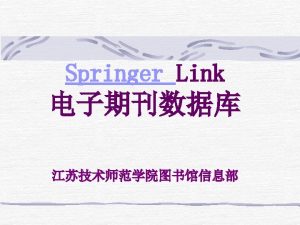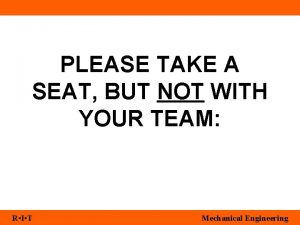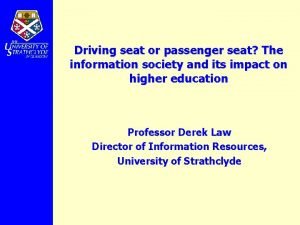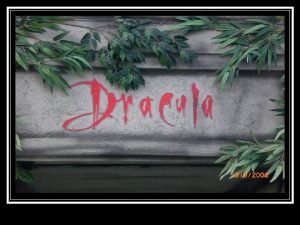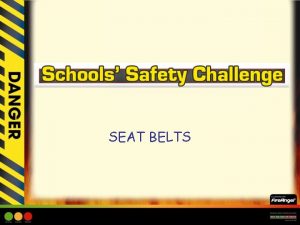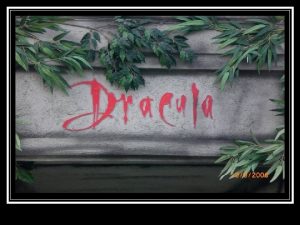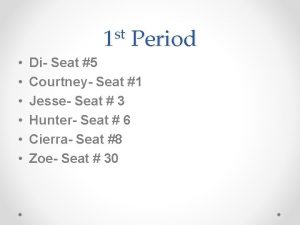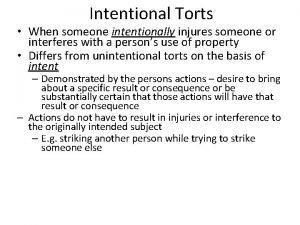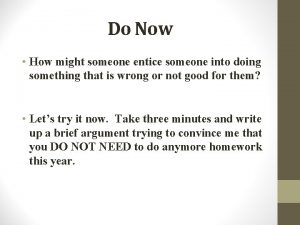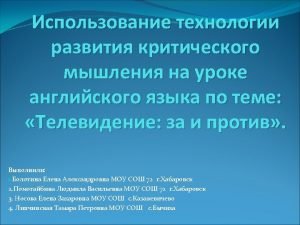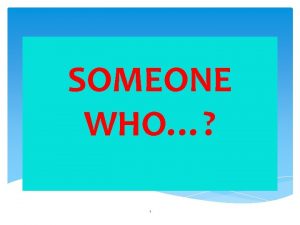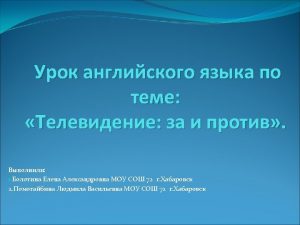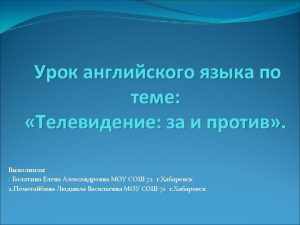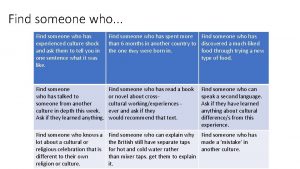Welcome Take a seat near someone DO NOT























- Slides: 23

Welcome • Take a seat near someone. • DO NOT take the handouts until invited to. • EVERYONE will get a copy of the handouts • Each TEAM will get a copy of the data • The data can be dowloaded at http: //www. csus. edu/indiv/k/kusnickj/index. ht ml

Let’s look at the Earth What makes the Earth special? If you were an alien visiting from another planet, what would you notice about the Earth that makes it distinctive? http: //www. esri. com/news/arcuser/0610/graphics/nospin_2 -lg. jpg

Now we’re going to look at the Earth in more detail. • Science is all about recognizing patterns and trying to make sense of the patterns. • We want to start our examination of the processes on Earth by looking for patterns. • It will be easier to see patterns if we compare the Earth with other planetary bodies – the Moon and Mars.

First set of patterns – topography • Topography = the shape of the ground – ups and downs. • Let’s look at the maps together

The Moon This is what we are used to seeing when we look at images of the Moon. We are looking at just one side of the Moon, and we aren’t seeing a lot of detail. http: //en. wikipedia. org/wiki/File: Full_Moon_Luc_Viatour. jpg

http: //maps. jpl. nasa. gov/textures/ear 1 ccc 2. jpg Here’s a different way to look at the Moon. This is called a cylindrical map. This map was made with data from a space probe that orbited the Moon.

Here’s how cylindrical maps work http: //www. progonos. com/furuti/Map. Proj/Dither/Proj. Cyl/Proj. CEA/proj. CEA. html Imagine you are looking through a clear piece of plastic wrapped around your globe. If you looked through the plastic and traced what you saw on the globe, you would have a cylindrical map.

On this cylindrical map of the Moon, the North and South poles are stretched out across the top and bottom of the map.

Compare these two kinds of images: • What kind of information is each one good for? • What kind of information is distorted or lost in each one?

One more kind of map • False color maps – show values for some kind of data using color. • Red is high values, blue is low. • We are looking at topography, so red is high mountains, blue is low valleys.

http: //imbrium. mit. edu/BROWSE/LOLA_GDR/LDEM_128. html

• • What color are the highest places? How high are those high places? What color are the lowest places? How low are the lowest places?

Now find your Mars maps Find the high places and the low places.

Now let’s compare Mars and the Moon • Find your handout called Thinking About Patterns in the Planets. • With your partner, talk about how Mars and the Moon are similar, and how they are different from each other. • Write down your thinking in the chart.

Now let’s collect our thinking • How are Mars and the Moon similar? • How are they different?

Remember when we look at our maps of Earth • Earth has water, but the Moon and Mars don’t have oceans of surface water. • So we will be considering the Earth without the water – what the surface is like under the water. • The blue on the map does NOT show water – it shows depth.

Now let’s look at the topography of the Earth • Find your Earth maps. • The first shaded relief map shows the topography of the ocean floor very well.

This map shows the continents really well and uses colors you’re used to seeing on maps. This map uses the same false colors you saw on the Moon and Mars maps.

Now compare the Earth to Mars and the Moon • How is the Earth like these other planetary bodies? • How is the Earth different from the Moon and Mars? • Talk with your partner, then write down your thoughts in your chart

Let’s look at the Earth more closely • At your table, one set of partners will work on the continents, and the other set of partners will work on the ocean floor. Decide who will do what. • Read the questions on the chart. Talk with your partner, and answer the questions for either the continents (top of the chart) or the oceans (bottom of the chart). • Share your answers with the other partnership. Make sure they understand the patterns you described.

Now let’s combine our observations • We’ll make one big sharesheet for the whole class that describes the topographic patterns of the Earth.

Time to Notice & Wonder • Open your journals. • Make a T-chart: I notice… I wonder… • Think about the patterns that you have seen so far. • Write down a few things you notice, and a few things you wonder about.

Now share your thinking with “Say Something” protocol • Go around the group. Each person says: “I noticed…” and then one thing they noticed. • When everyone has had a chance to talk, go around the group again. This time each person says: “I wonder…” • This is not a conversation. We are just putting ideas on the table, not reacting to them or judging them. • You can add to your T-chart if you hear an idea that interests you.
 Welcome please take a seat
Welcome please take a seat British cartoon by david low 1934
British cartoon by david low 1934 Please sit down and your seat belts
Please sit down and your seat belts Please take a seat
Please take a seat Near foot near shoulder tackling
Near foot near shoulder tackling Contingency measures during workplace accidents
Contingency measures during workplace accidents Where can i take forklift classes near me
Where can i take forklift classes near me Sadlier level d unit 1 synonyms
Sadlier level d unit 1 synonyms Prefix believe
Prefix believe Take a bus or take a train
Take a bus or take a train Wise men three clever are we
Wise men three clever are we What happened sunday morning in romeo and juliet
What happened sunday morning in romeo and juliet Please do not throw sausage pizza away
Please do not throw sausage pizza away When you take something that doesn't belong to you
When you take something that doesn't belong to you Read the sentences and decide if they are true or false
Read the sentences and decide if they are true or false Fact and opinion sentences
Fact and opinion sentences Adverbials for cohesion
Adverbials for cohesion Zero starts with one
Zero starts with one Blanket drag technique
Blanket drag technique Pack strap carry
Pack strap carry Incisal rest
Incisal rest Lampstand exodus 25
Lampstand exodus 25 Rear right safety restraint system fault
Rear right safety restraint system fault Cingulum rest seat
Cingulum rest seat
